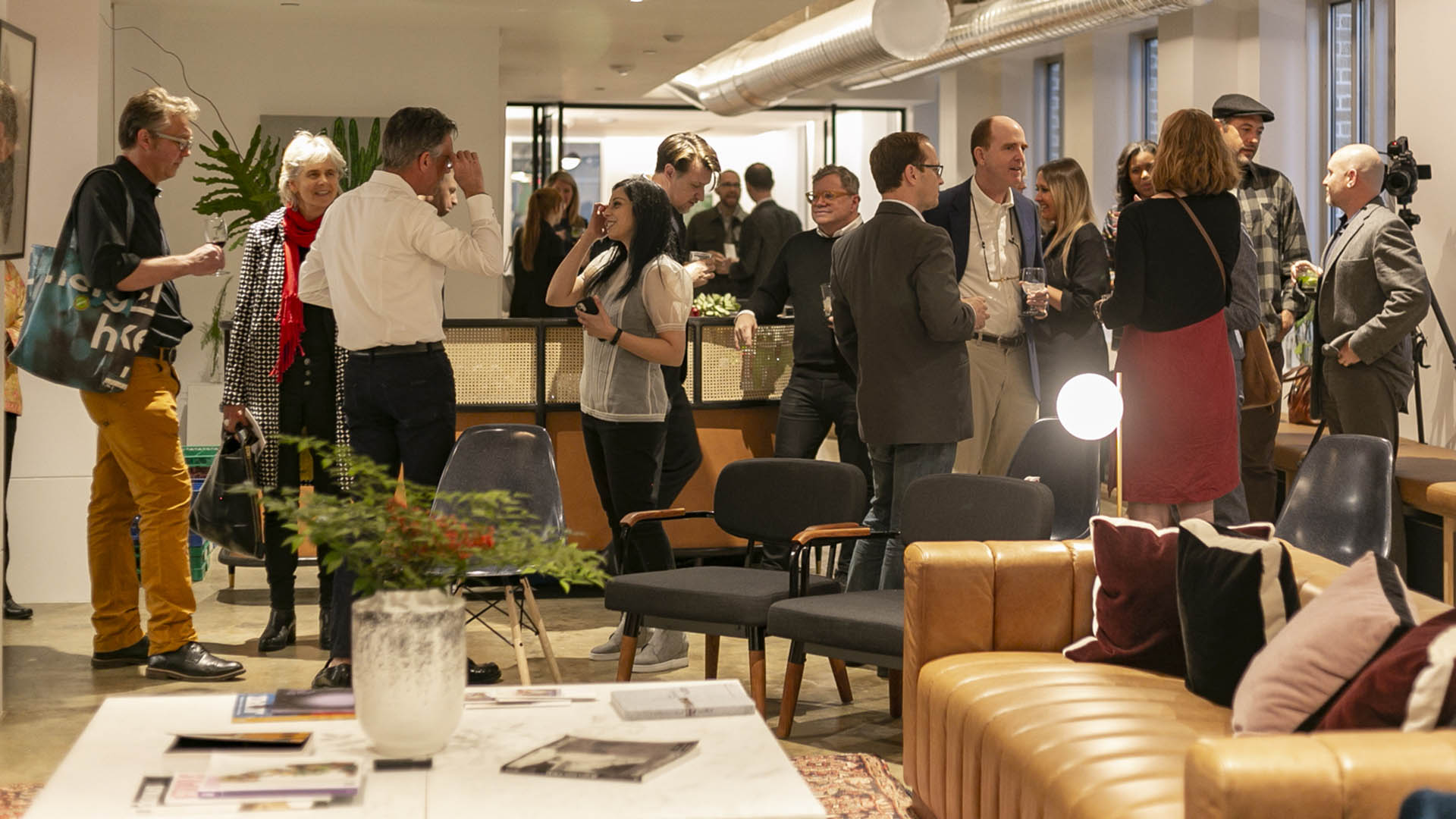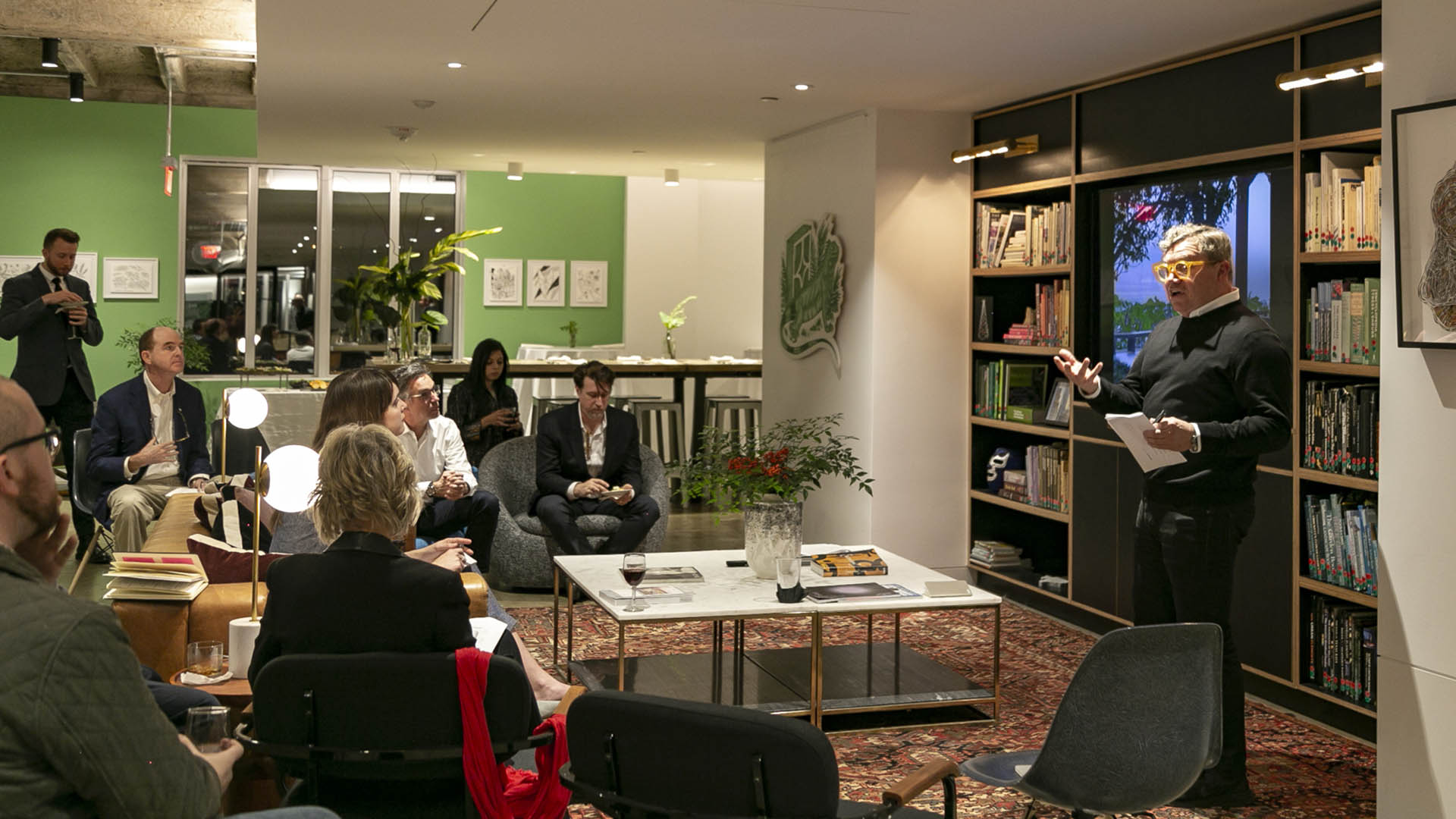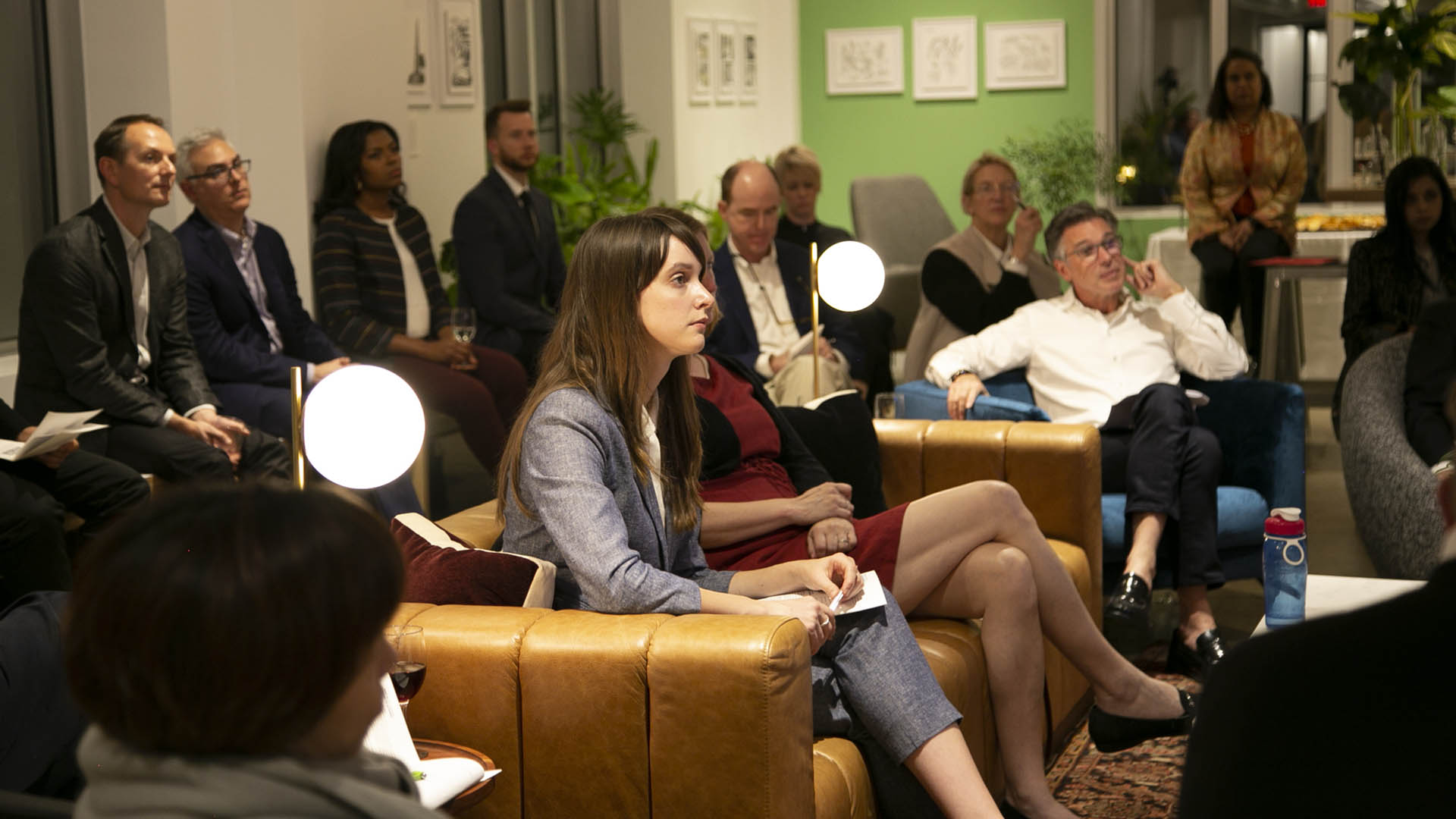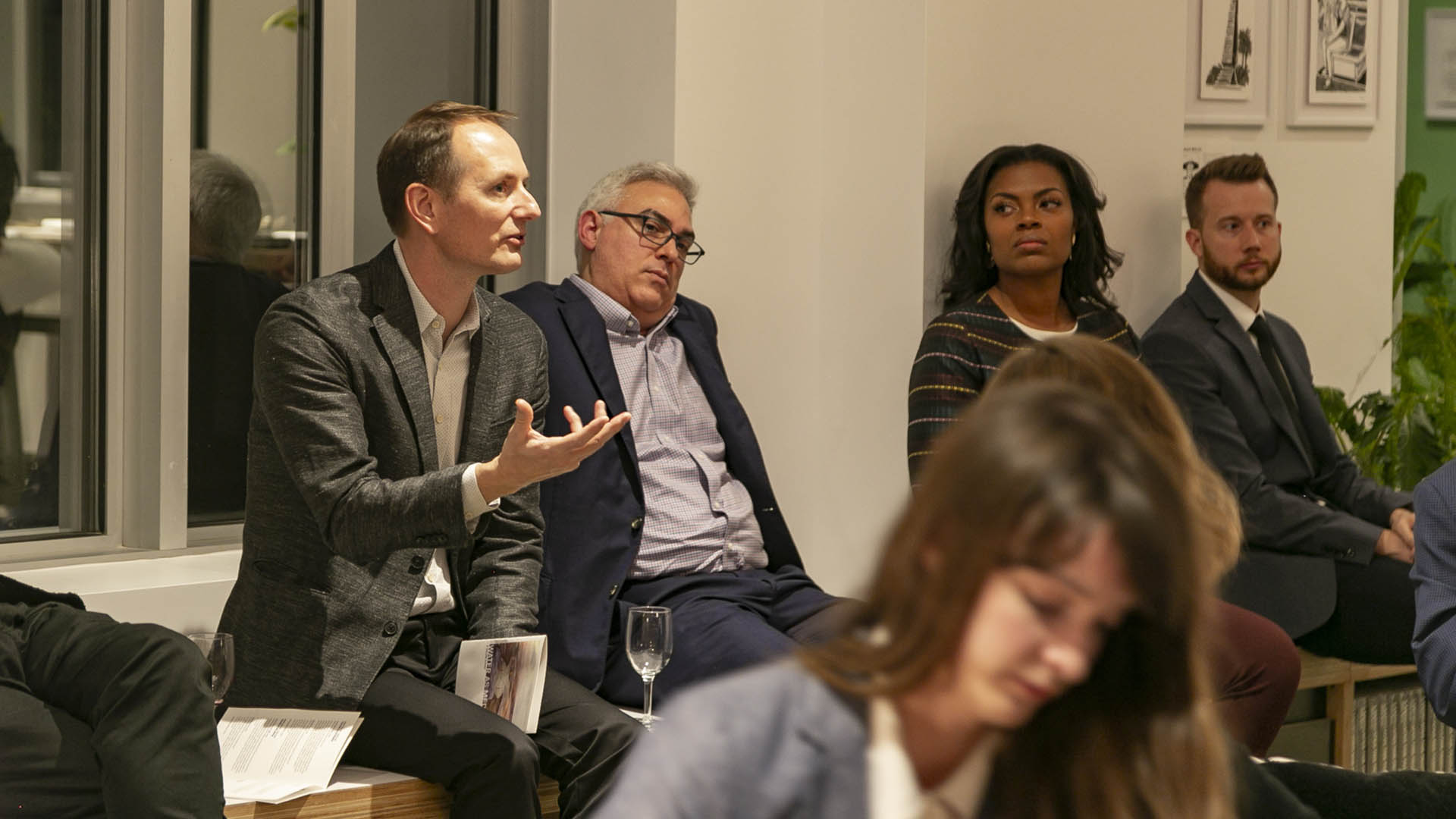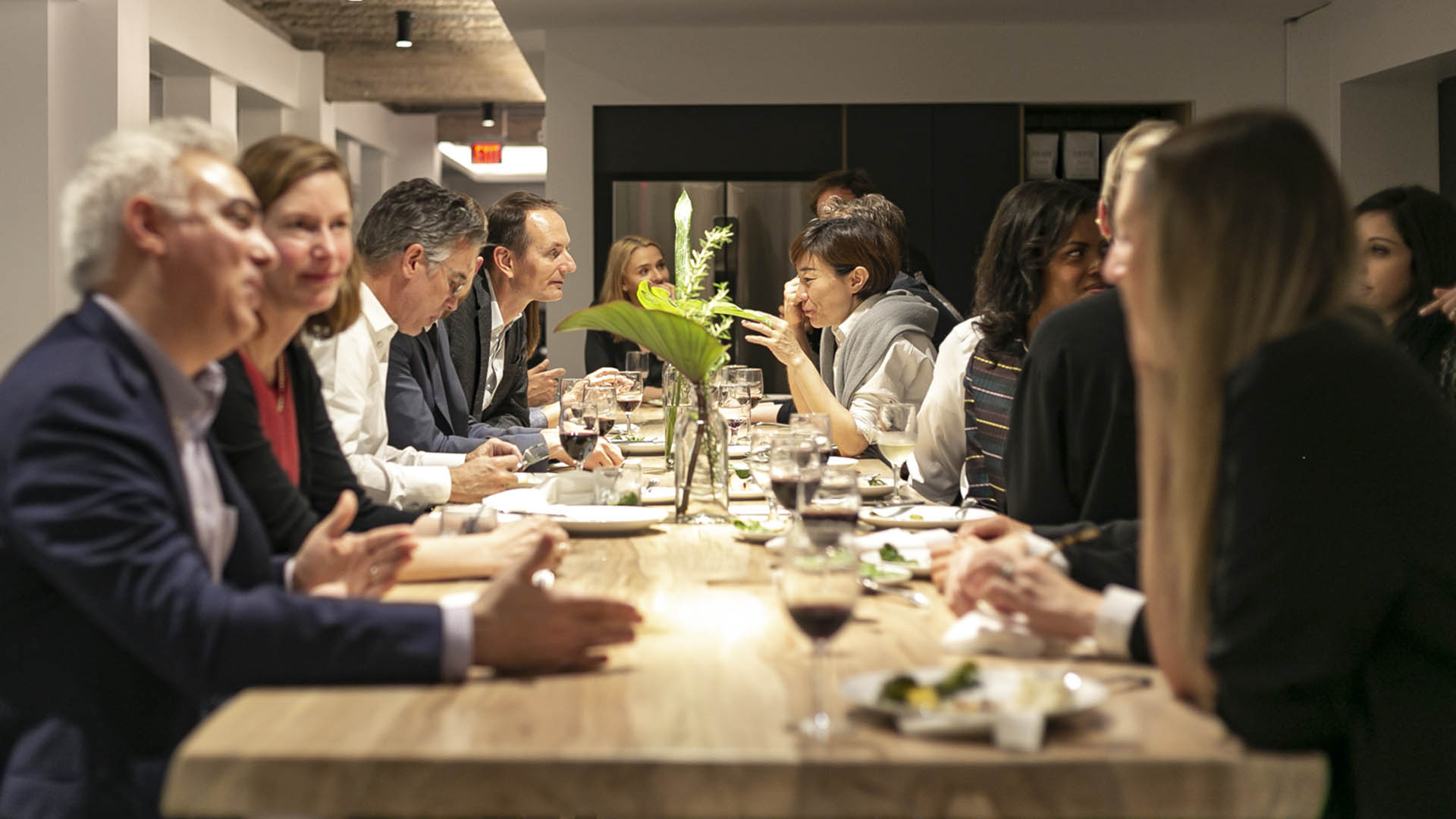About the Event
The first of a planned series of gatherings hosted by SWA’s Houston studio that will address a variety of issues, Water as Medium brought together experts from a wide range of fields to discuss the evolving challenges of water in the 21st century… and beyond.
Scroll down to hear their thoughts on equity, ecology, and disaster response; water’s presence in the cultural domain; and innovation and futurity with regards to water.
While there are no easy answers, the interplay of practical and visionary responses underscores the value of an interdisciplinary conversation to an issue of this magnitude.
The lively discussion featured a multidisciplinary group of thinkers.

Organizers
Additional SWA participants included Maribel Amador (Associate), Matt Baumgarten (Associate Principal), Clayton Bruner (Associate Principal), Fran Hegeler (Director of Marketing and Communications), Sean O’Malley (Principal) Tim Peterson (Principal), Naila Qureshi (Administrative), Rhett Rentrop (Principal), Michael Robinson (Associate Principal), Kerri Da Silva (Associate), Jonnu Singleton (Associate), James Vick (Principal), and Peiwen Yu (Associate Principal).

Equity, Ecology, and Disaster Response
Both scarcity and overabundance have serious impacts on communities and local ecosystems in the era of climate change.How can the design professions engage decision-makers — and the public — in a topic whose complexity can seem overwhelming?
“In order to have a more democratic process in the decisions about water planning and management, we need transparency. Does runoff from newly developed neighborhoods have an effect on preexisting ones? When that is not planned for, it is usually older, poorer neighborhoods that suffer more of the effects of heavy rain events or major storms.”
– IRENE KLAVER
“A lot of us assume water is a given part of our environment. But we’ve started to realize that what used to be a 500-year storm is now a 100-year storm. What used to be a 500-year floodplain is now a 100-year floodplain. To a lot of people, this is still very sudden news. It’s hard to explain and try to persuade.”
– DAVID TODD
“The challenge that we face is that we have to take a complex subject and find a way to convey the ideas to a lay audience. That sometimes means avoiding jargon and technical terms for more universal ones, because the 21st century will be defined by water issues that affect abundance, scarcity, ecology, quality, and access.”
– MIGUEL BUSTILLO

The Cultural Domain
Metaphoric and mythic traditions worldwide inspire the use of water in art, literature, and design of the public realm. How can those in the land-based professions continue to celebrate its dynamic, living nature while buffering against its potentially devastating impacts?
“The biggest challenge when we think about water is reimagining urban infrastructure. There is still a sense that these things are taken care of elsewhere, in a reservoir or a hydroelectric dam outside of the urban core. We have this idea that where we live is separate from where water is handled. But we are completely embedded in these ecologies. Hurricane Harvey was a prime example of that.”
– TROY SCHAUM
“The future is a paradigm of living with water. Our cities are affected by water’s ramifications for our educational, political, and economic systems. It has ramifications for how we plan, how we design. The big shift will be from seeing water solely as a resource to its having its own agency, its own power, and learning to listen to and work with that agency instead of only harnessing or trying to control it.”
– IRENE KLAVER
“I think a lot about sustainability and water and the need to have these kinds of conversations, rather than being off in our own bubbles. We need to connect academia to the city a little bit more. We need more spaces where we can encourage this kind of overlapping of all the different disciplines of people who are thinking about water. It’s an immensely complex topic, and no one discipline has all the answers.”
– JORGE LOYO

Innovation and Futurity
We’re at a turning point in the conversation about water that demands interdisciplinary vision. Our contributors discuss pragmatic approaches they have witnessed or been part of in the present… and forward-thinking strategies for the challenges of the future.
“I think the analogy is the shift from traditional and Newtonian physics to quantum physics. Our conversations about water and water resources and resources in general need to evolve in the same way – and honestly, just as fast – if we want to make change happen and we’re wired to have water be the medium in which we communicate. How we do change and move forward as a society?”
– ZION ESCOBAR
“With climate change and with the kind of back-loaded impacts that we’re having, and with front-loaded forces that may go back 100 or 150 years, we’re not looking at a smooth arc of change. It’s more stepwise. It has to be, with these dramatically different climate events that are hard to predict. It’s a little like trying to make a commitment to a chair in musical chairs.”
– DAVID TODD
“It takes a lot of work and a lot of really smart people – and a lot of people asking stupid questions, which lead to great answers. It’s really exciting when we get to the end of a project and we’re looking at statistical analysis, and we see a line that is going down over time. While you can’t use that to predict the future, it certainly says in 20 to 30 years we could be getting close to where we should be.”
– RACHEL POWERS

Contributors
Click our contributors’ headshots below to learn more about them.




